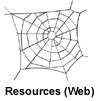|
|
 |
The
required readings for this unit are:
Unit.D.6.2.
Care/Custody
 Australia
Australia |
Required
Reading(s)
|
 |
Insert article here
 Canada
Canada |
Required
Reading(s)
|
 |
Insert article here
 International
International |
Required
Reading(s)
|
 |
| Rask, M.,
& Aberg, I. (2002). Swedish forensic |
nursing
care: Nurses' professional contributions and educational
needs. Journal of Psychiatric & Mental Health
Nursing, 9(5), 531-539. Retrieved December 12,
2002, from Academic Search Premier database: http://search.epnet.com/direct.asp?an=7438493&db=aphbr>
- In this
report, data regarding how nursing care could contribute
to improved care and the organizational changes
needed and what knowledge the nurses need, in order
to be able to meet the demands in the future, were
analyzed by means of content analysis.
|
 United Kingdom
United Kingdom |
Required
Reading(s)
|
 |
| Adshead,
G. (2002). Three degrees of security: |
Attachment
and forensic institutions. Criminal Behaviour
& Mental Health, Supplement, 12(2), S31-45.Retrieved
December 12, 2002, from Academic Search http://search.epnet.com/direct.asp?an=8587748&db=aph
- Attachment
theory can be a useful tool in understanding management
problems in forensic institutions, where staff and
inmates have long term dependency relationships
that involve both care and control. The author discusses
the relationship between security and violence and
how the forensic institution has to become a 'secure
base'.
|
| Mercer,
D., Mason, T., & Richman, J. (2001). Professional
|
convergence
in forensic practice. Australian & New Zealand
Journal of Mental Health Nursing, 10(2), 105-115.
Retrieved December 12, 2002, from Academic Search
Premier database: http://search.epnet.com/direct.asp?an=4591183&db=aph
- This
paper outlines the development and convergence of
forensic science and secure psychiatric services
in the UK, locating the professionalization of forensic
nursing within a complex web of political, economic,
and ideological structures. It is suggested that
a stagnation of the therapeutic enterprise in high
and medium security provision has witnessed an intrusion
of medical power into the societal body. Expanding
technologies of control and surveillance are discussed
in relation to the move from modernity to postmodernity
and the ongoing dynamic of medicalized offending.
|
 United States
United States |
Required
Reading(s)
|
 |
| Maeve, M.
K., & Vaughn, M. S. (2001). Nursing with |
prisoners:
The practice of caring, forensic
nursing or penal harm nursing? ANS, 24(2),
47-64. Retrieved December 20, 2002, from from Health
Source: Nursing/Academic Edition database:
http://search.epnet.com/direct.asp?an=6682074&db=hch
- Note
- Maeve and Vaughn critically analyze three philosophic
stances toward nursing care with prisoners and suggest
their philosophic commensurability within traditional
nursing practice. A critical hermeneutic perspective
is used to illustrate the issues involved.
|
Databases
For the full text article online,
sleuth the 'University
of Calgary/ Library/ Article Indexes':
Directions:
- Select
- Indexes and abstracts with links to full text articles
- Select
- Academic Search Premier or Expanded Academic ASAP
- Select
- Connect
-
Fill in
User ID and Pin
- Fill
in search words:
care and custody
Top of Page
|
 |
 |
The
'recommended only' readings for this unit are the following:
Unit.D.6.2.
Care/Custody
 Australia
Australia |
Recommended
Reading(s)
|
 |
Insert article/book/chapter here
 Canada
Canada |
Recommended
Reading(s)
|
 |
| Peternelj-Taylor,
C. (1999). Forensic psychiatric nursing: |
The paradox
of custody and caring.
Journal of Psychosocial Nursing & Mental
Health Services, 37(9), 9-11. Retrieved July
1, 2002, from ProQuest database.
- Note
- The trials and tribulations encompassing the care
and control of the socially undesirable-the criminal,
the dangerous, and the mentally ill-have historically
burdened society and continue to challenge the collective
wisdom of the international community.
|
 International
International |
Recommended
Reading(s)
|
 |
Insert article/book/chapter here
 United Kingdom
United Kingdom |
Recommended
Reading(s)
|
 |
| Adshead,
G. (2000). Care or custody? Ethical |
dilemmas
in forensic psychiatry. Journal of Medical Ethics,
26(5), 302-304. Retrieved July 1, 2002 from
ProQuest database.
|
| Allen, D.
(2001). Capacity to care. Nursing Standard, |
15(31),
55. Retrieved July 1, 2002 from ProQuest database.
|
| MacInnes,
D. (2000). Interventions in forensic psychiatry: |
The caregiver's
perspective. British
Journal of Nursing, 9(15), 992-998. Retrieved
July 1, 2002, from ProQuest database.
|
| Mercer,
D., Mason, T., & Richman, J. (1999). Good & |
evil
in the crusade of care: Social constructions of
mental disorders. Journal of Psychosocial Nursing
& Mental Health Services, 37 (9) 13- 17.
Retrieved July 2, 2002 from ProQuest database.
- At the
level of nursing practice, this reorientation was
advertised by the shift from a custodial to a therapeutic
role, enacted through the introduction of nursing
process, nursing models, and mandatory reeducation
for staff. Though commonplace elsewhere, these innovations
assumed symbolic potency in a crusade of change
implemented with proselytizing zeal (Mercer, Mason
& Richman, 1999).
|
| Willmott,
Y. (1997). Prison nursing: The tension between |
custody
and care. British Journal of Nursing, 6(6),
333-336. Retrieved July 2, 2002 from ProQuest database.
|
 United States
United States |
Recommended
Reading(s)
|
 |
US
Hammer, R. (2000). Caring in forensic nursing: |
Expanding
the holistic model. Journal of Psychosocial Nursing
& Mental Health Services, 38(11), 18-23.
Retrieved July 1, 2002 from ProQuest database.
- Note:
A reorientation to the concept of caring as the
essence of pofessional practice may be needed in
the preparation of graduates of forensic nursing
programs so they may be able to realize the full
potential of a caring relationship with all the
clients and potential clients encountered during
forensic nursing practice. Although the concept
can be viewed as including the caring that is a
standardized part of nursing practice, such as that
delineated in the various clinical standards of
care, this article is limited to a discussion of
the conceptual aspect of caring as demonstrated
by caring relationships, caring behaviors, and caring
attitudes.
|
Top of Page
|

|
Additional
references for this unit can be found in 'forensic
references'
of the forensic sourcebooks.
- Sleuth
'forensic reference' database for:
Top of Page
|

|
Video's
recommended for this unit are:
|
|
Resources
(Video)
|
 |
| Information
only |
| Peternelj-Taylor,
C.A. & Johnson, R. L. (Producers) and |
Bulk,
F. (Director) (1993). Custody and caring: A challenge
for nursing. [Video] [31.45 minutes] Saskatoon,
Saskatchewan, University of Saskatchewan, Division
of Audio Visual Services.
- Note
that forensic health care professionals working
in corrections face the ongoing challenge of reconciling
the conflicting goals of these very different systems.
|
Top of Page
|

|
The
required websites to sleuth for this unit are the following:
Unit.D.6.2.
Care/ Custody
 Australia
Australia |
Resources
(Web)
|
 |
Insert website here
 Canada
Canada |
Resources
(Web)
|
 |
Insert website here
 International
International |
Resources
(Web)
|
 |
|
Britain
and the Netherlands
de Haan, F., & van Drenth. A. (2001).
Elizabeth Fry.
|
The
Rise of Caring Power. Retrieved July 1, 2002 from
the Elizabeth Fry Website. http://www.elizabethfry.net/
·
Note the concept of caring power is based on the historian/philosopher
Foucault's concept of
pastoral power, but takes into account the vital role
played by gender.
|
 United Kingdom
United Kingdom |
Resources
(Web)
|
 |
Insert website here
 United States
United States
|
Resources
(Web)
|
 |
Insert article here
Top of Page
|
 |
For
additional websites on this unit, sleuth 'forensic
websites' in the forensic sourcebooks.
Top of Page
|
 |
|